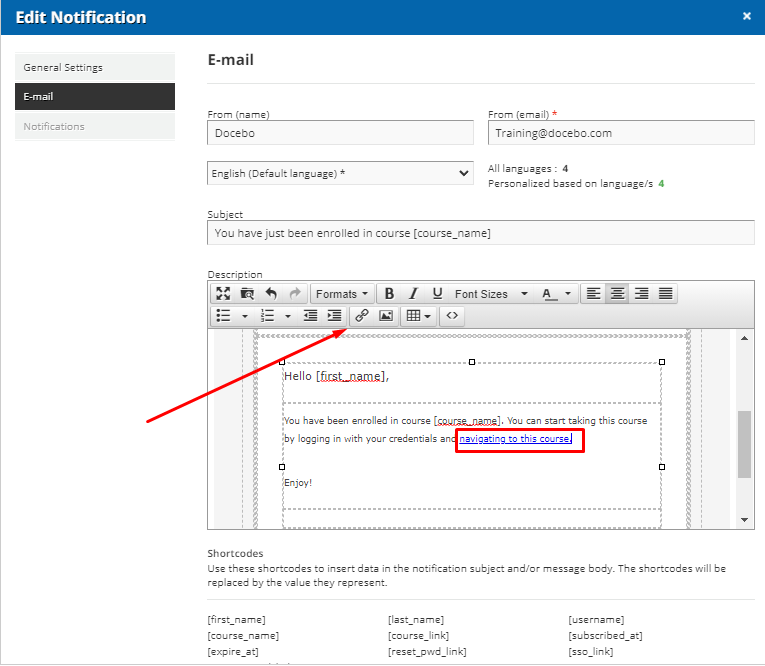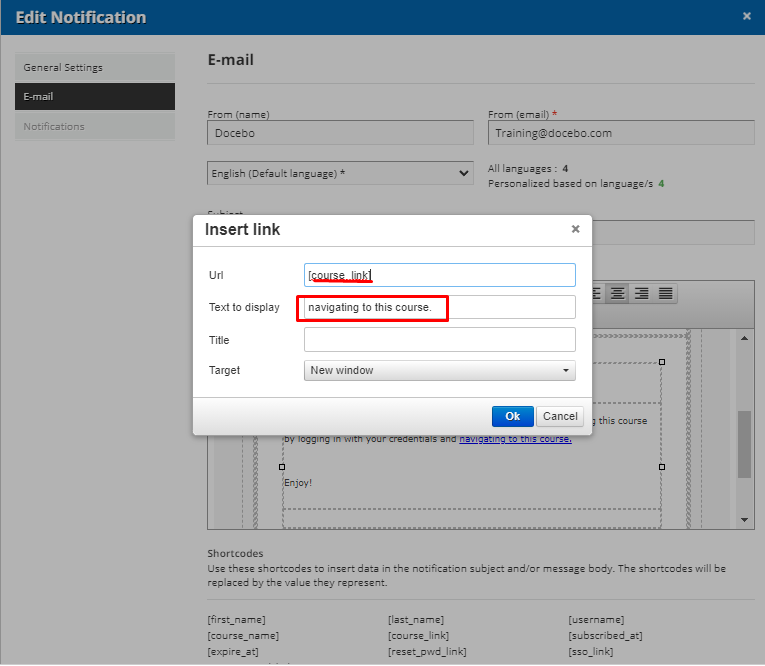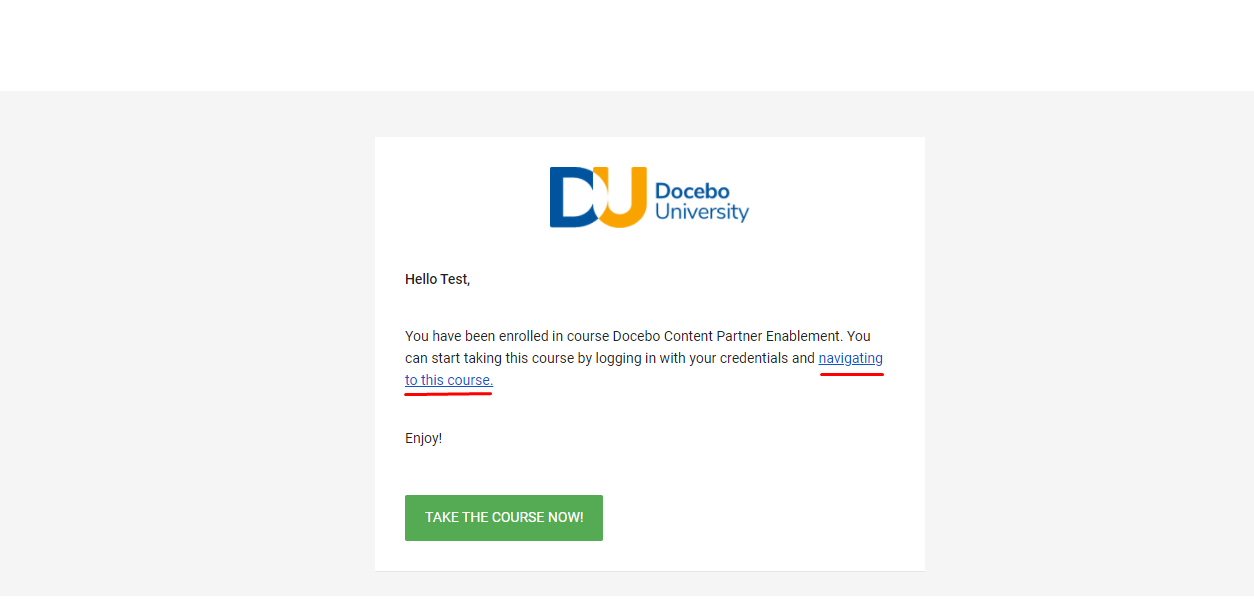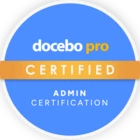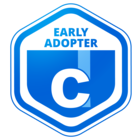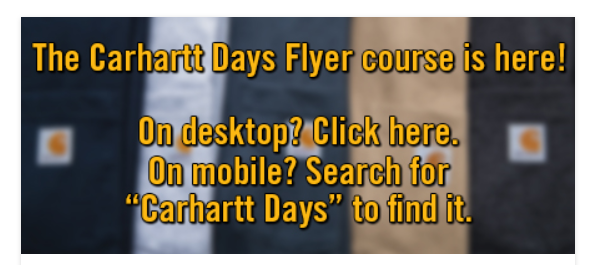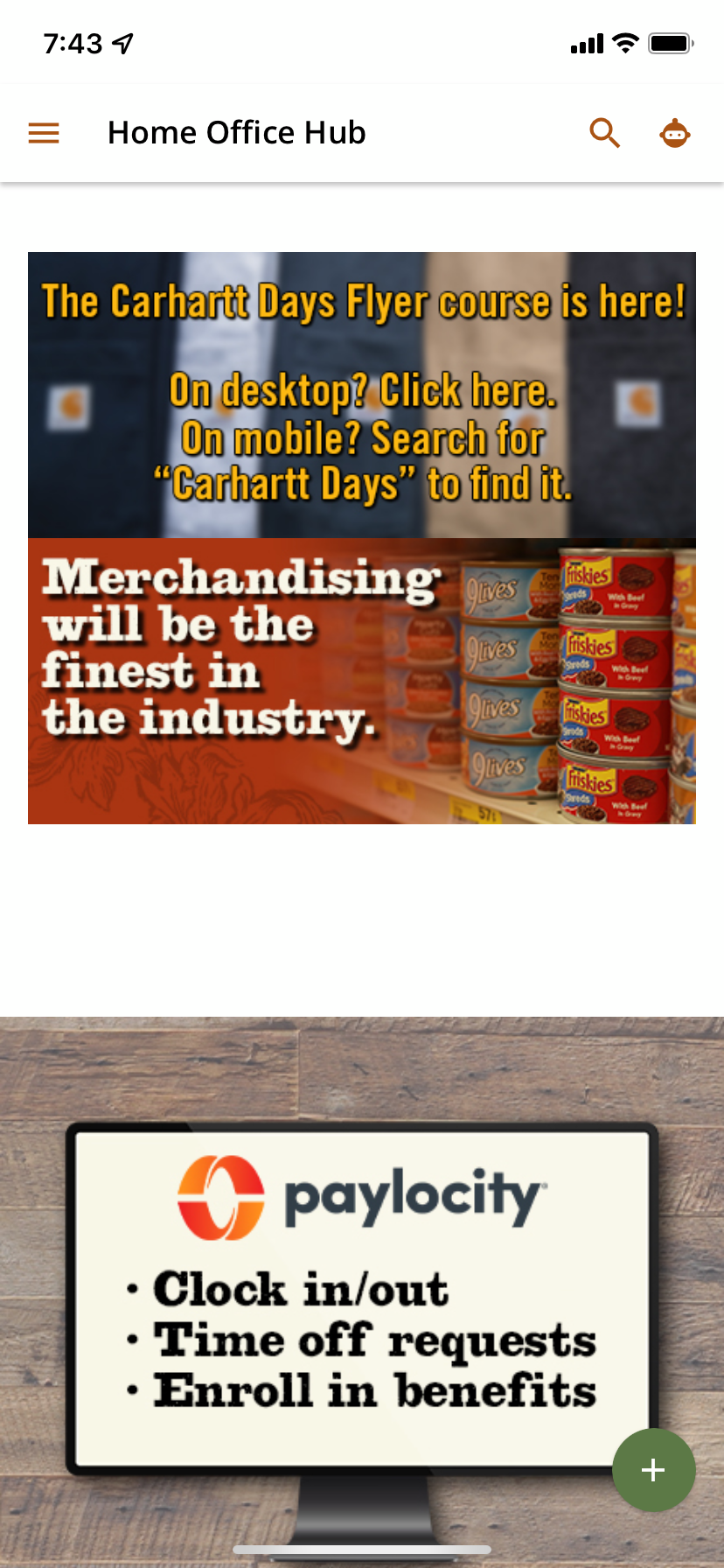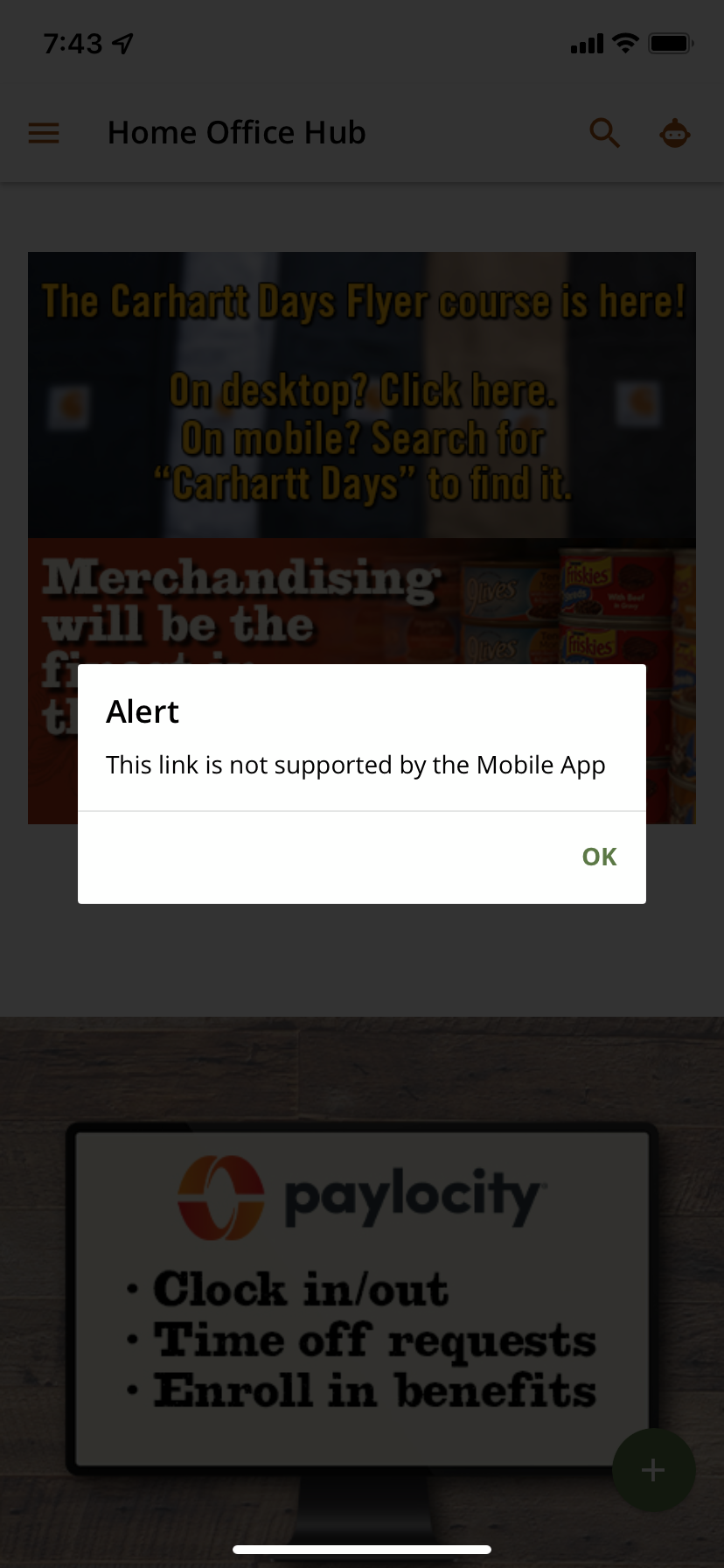Inspire 2021 - Admin Tips and Tricks to Save You Time
 Tip #1 - Admin Dashboards and Landing Pages
Tip #1 - Admin Dashboards and Landing Pages
As LMS Admins our priorities are often driven towards creating and supporting those who will be helping to deploy training. That includes managers and power users who need access to data to ensure that their staff are up to date. Since Super Admins have access to everything in the platform we can often put off creating dashboards until we’ve enabled all the other members of our staff.
Why should we create Admin Dashboards?
-
Admin Dashboards can create shortcuts to key process and resources both inside and outside the LMS
-
Dashboards can help to embed your processes in new Admins by centralizing the resources needed to your job.
What should should we consider when building an Admin Dashboard?
-
What is your mission and what processes does your team have to accomplish that?
-
What are the tools inside and outside that make up those processes?
-
How can we position these on a Custom Widget Page to create a page full of resources for Admins?
-
What Widgets can we use to reduce friction and clicks for our admins.
-
Remember! Since this page is serving a much smaller group (sometimes just one person!) you have a lot more flexibility than the pages you deploy for other audiences. Enjoy yourself!
Here’s a couple screenshots of what we have for Super Admins in Docebo University.
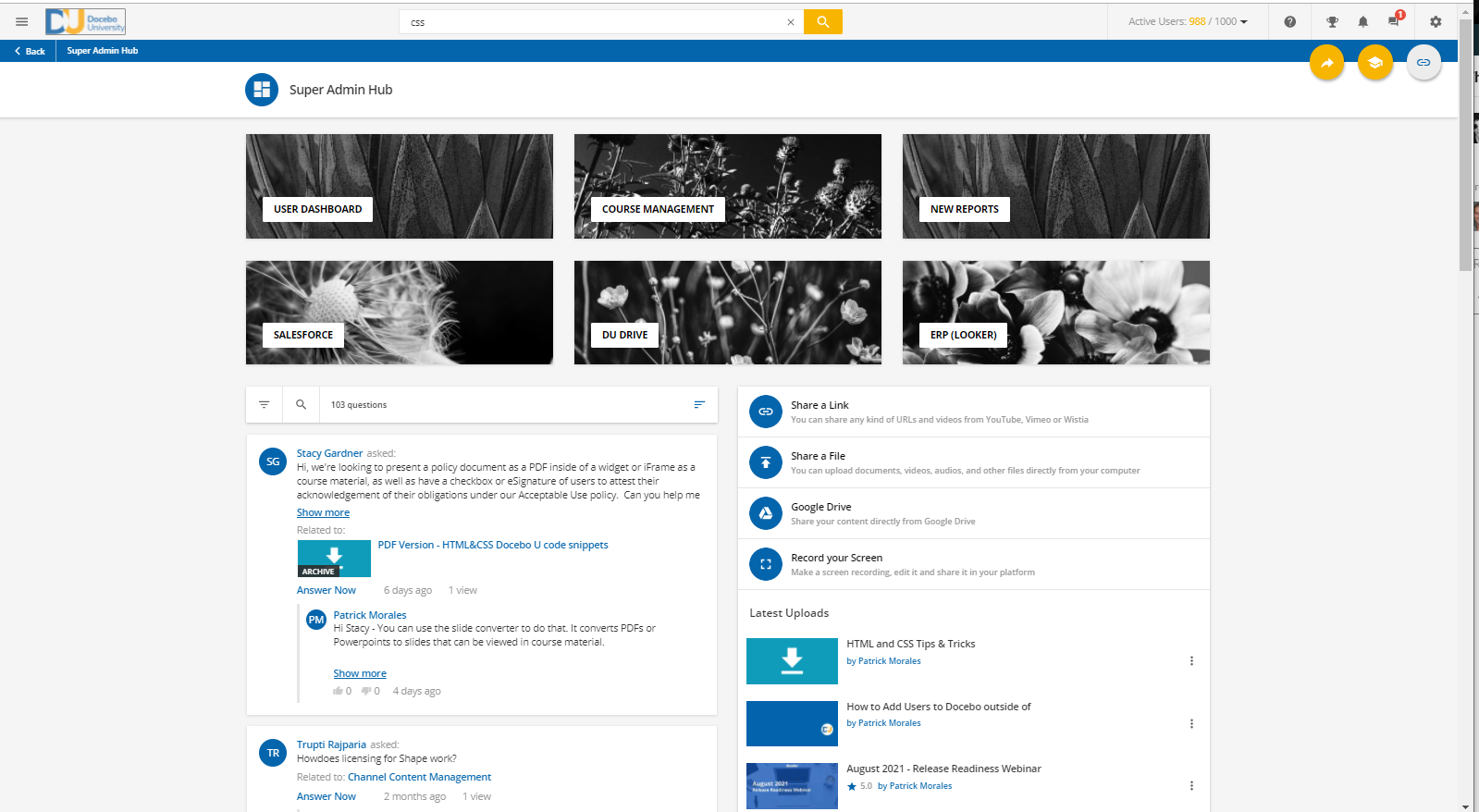
Additionally we use the Share Content widget to create a one stop location for uploading content to channels. Next to that is a Q&A widget that allows us to monitor any questions related to assets in the system.
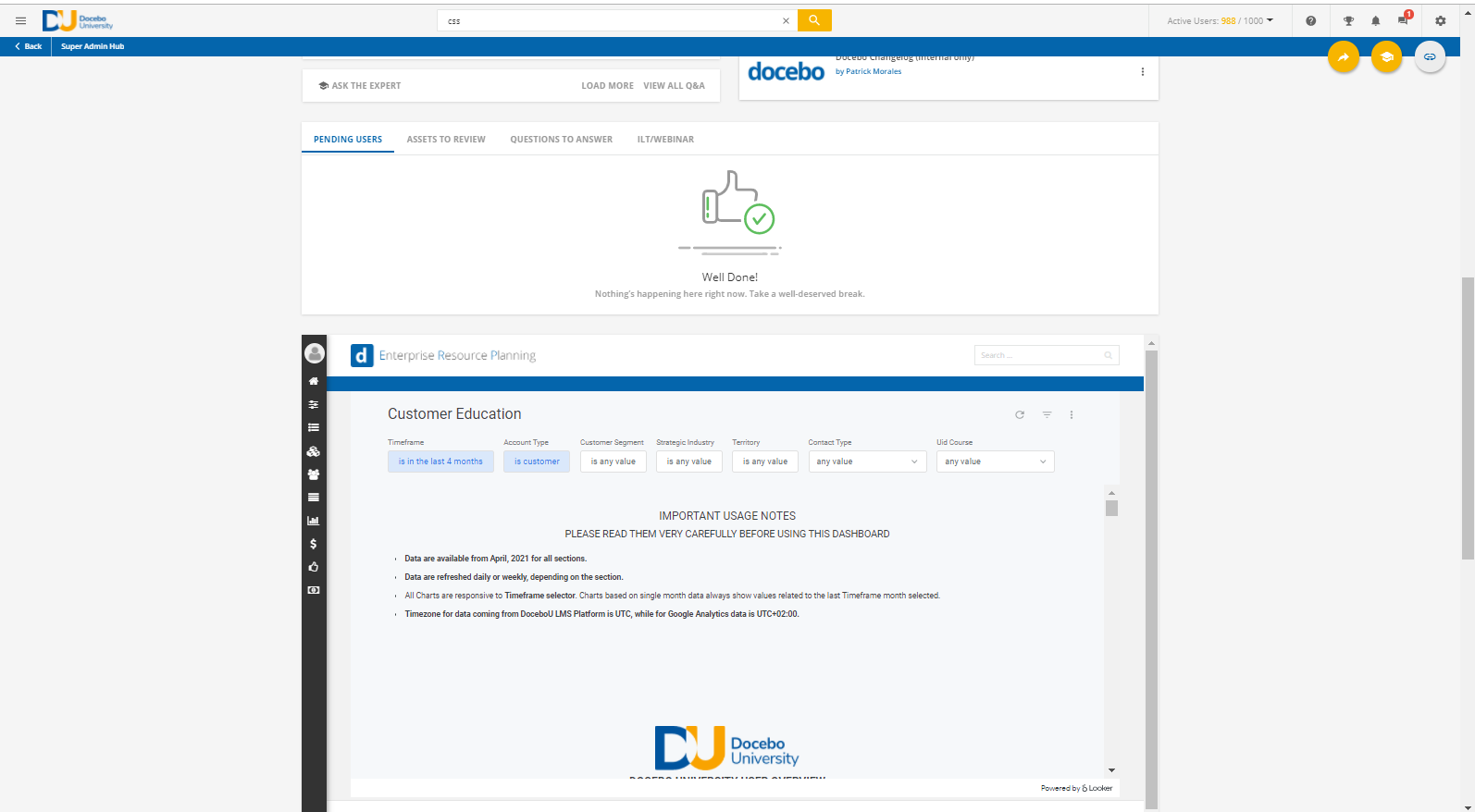
Below that is an i-frame widget that links to an external dashboard created by our looker team.
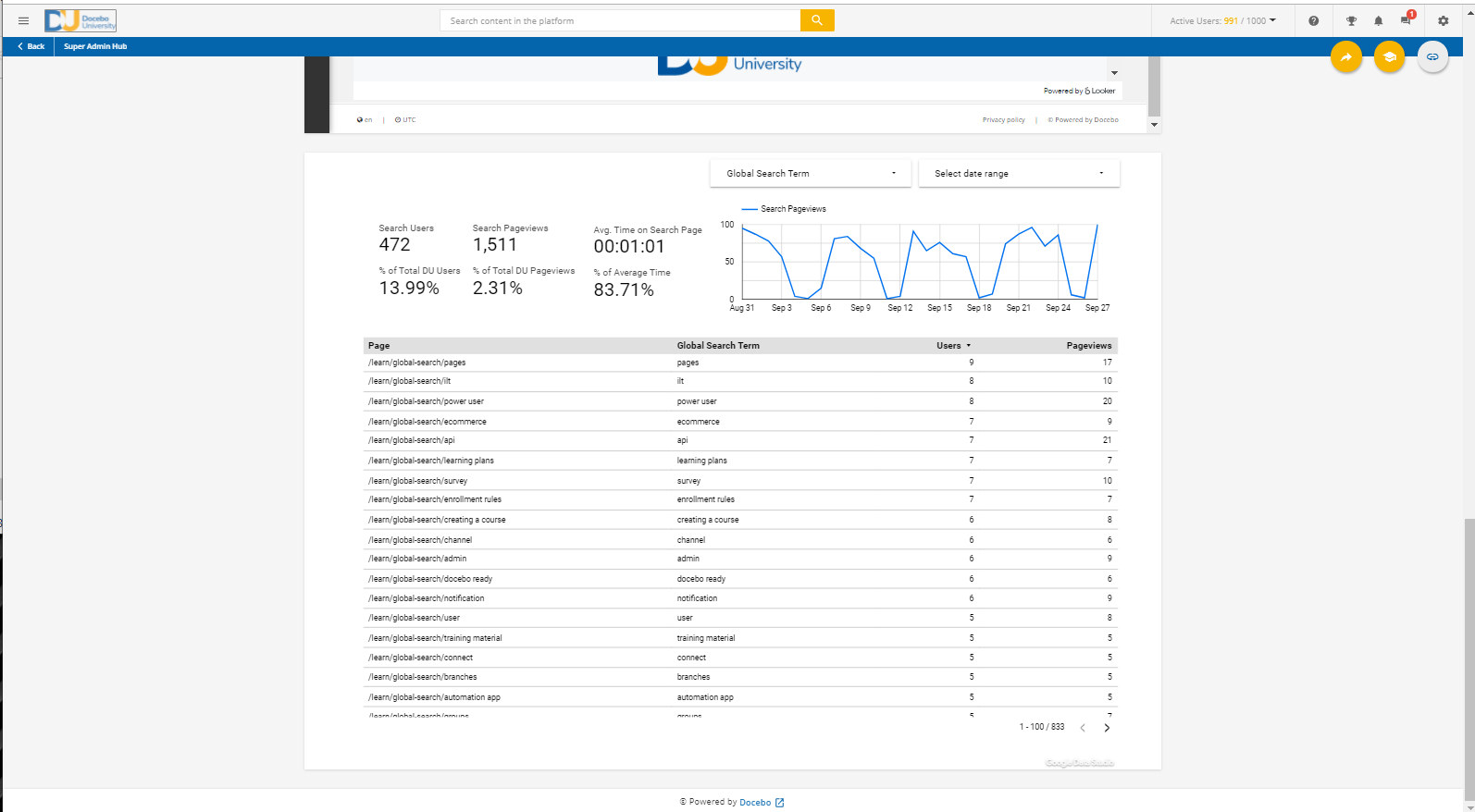
 Tip #2 Browser Tricks
Tip #2 Browser Tricks
Get ready because this is a couple tips and tricks rolled into one!
Bookmarks
While Admin Dashboards are fantastic for centralizing your teams mission depending on the size of your team they require consensus about what’s important and what lives there.
But what strategies as individual admins can we implement to reduce precious clicks and thus time.
Just a reminder but almost every page in the LMS has a unique URL that can be bookmarked which means that you can build your own individual dashboard by bookmarking the pages that are essential to your individual work flows.
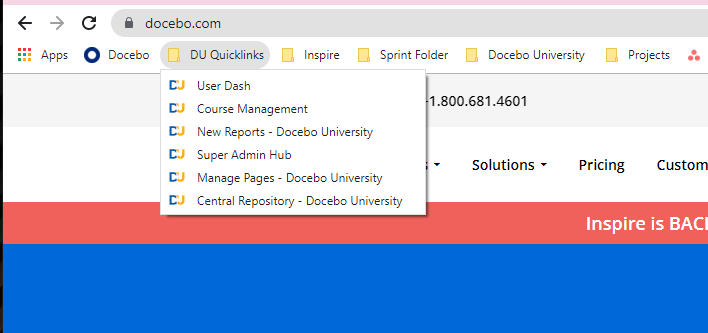
Which leads me to another interesting concept…
Sprint Bookmarking
We all have our own methods of accomplishing tasks that we need to get done whether they’re in the LMS or not. One method I’ve started to adopt is to create a “Sprint Folder” which is just a folder where I move links necessary to complete a specific “sprint” of tasks.

Adjusting the Page Size
Have you ever wished you could take a full screenshot of the entire Custom Widget Page you just created (maybe that Super Admin Dashboard you just built) but can’t get the whole page in one screenshot?
Or maybe you’re getting frustrated creating that page because you want to drag a widget from the top of the page to the very bottom and you’re getting stuck.
You can adjust the page size inside your browser by using the following keyboard shortcuts:
Mac: [cmd] + [+] or [-]
PC: [ctrl] + [+] or [-]
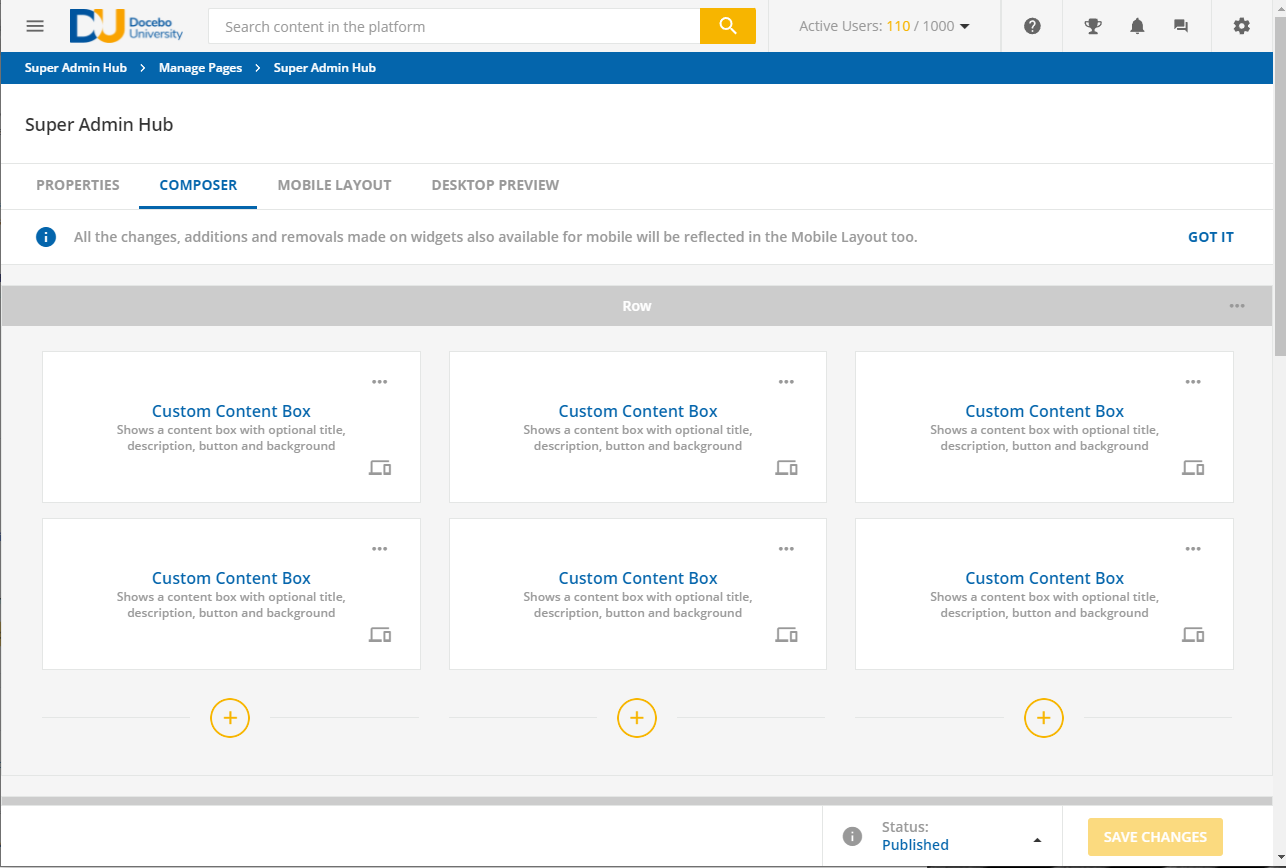
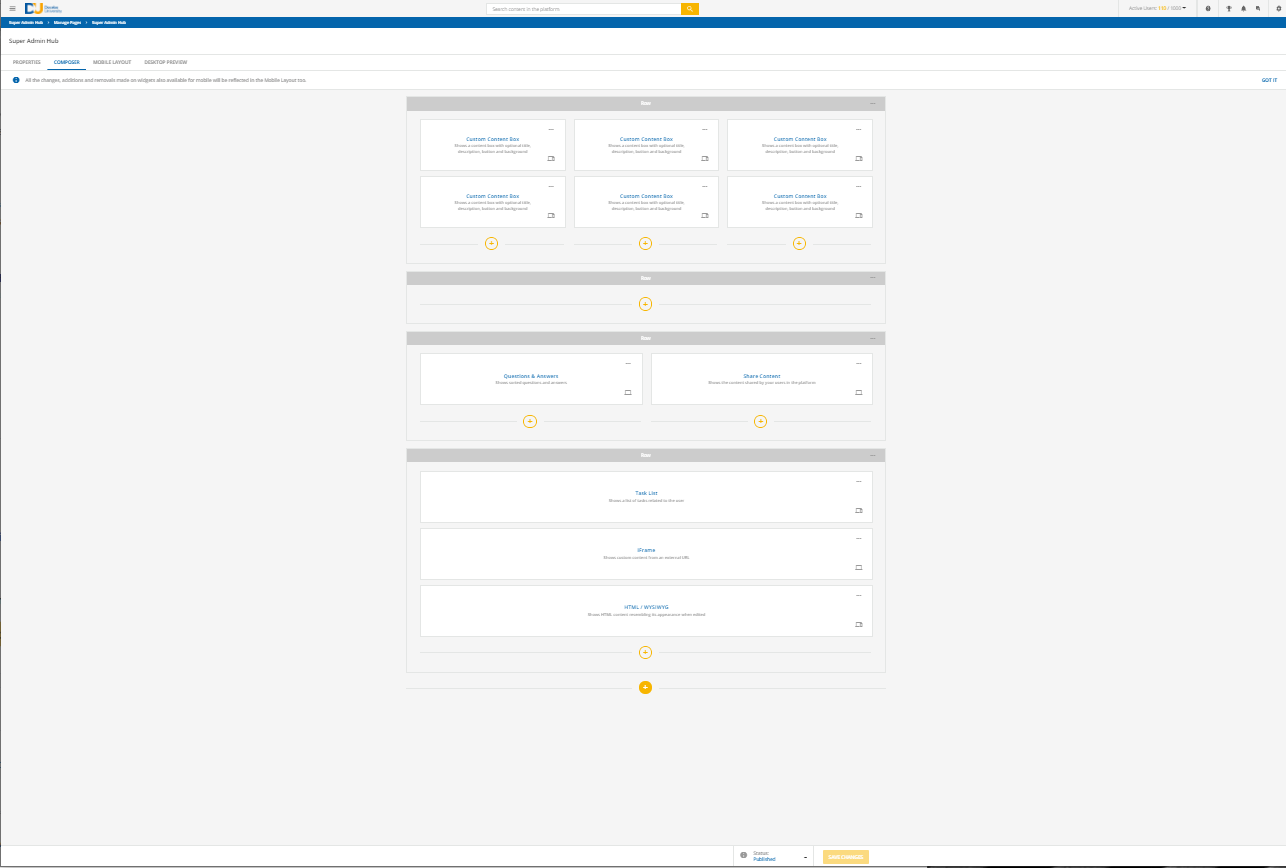
 Tip #3 Formatting URLs
Tip #3 Formatting URLs
Relative URLs and Custom Content Boxes
Let me know if this sounds familiar. Maybe you’re a new or existing Extended Enterprise customer and you’ve just built a custom page and linked to it with a custom content box on another page. You’ve just copied and pasted the URL into the custom content box and clicked save and you’re filled with excitement. Next thing you know you got an email from someone saying they’re getting a 404 error when they access the page.
Or maybe you’re on pins and needles thinking about an upcoming change to your custom domain and you’re thinking “Oh no all of those URLs are going to break when we make the change”
Well strap in! You’ll love this trick.
Want to share this tip with a peer or colleague? Check out the guide on using relative URLs:
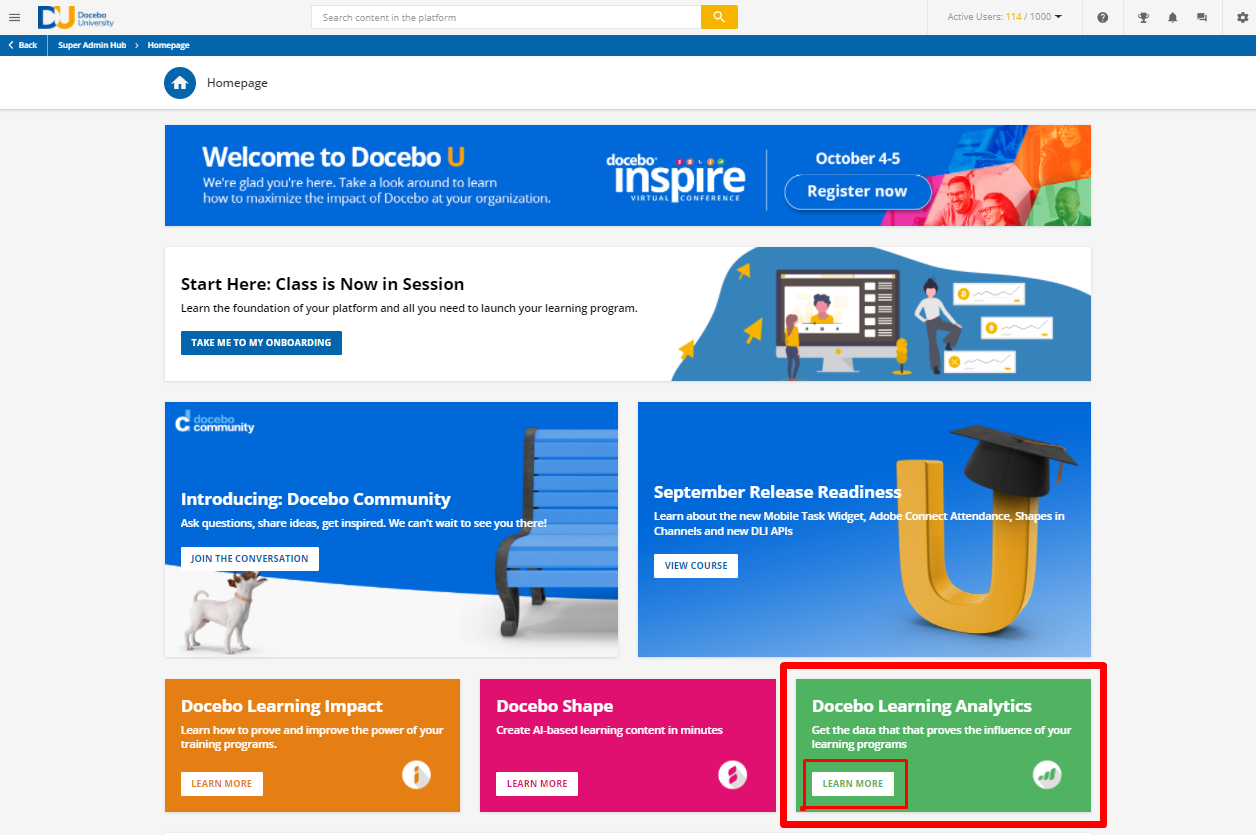
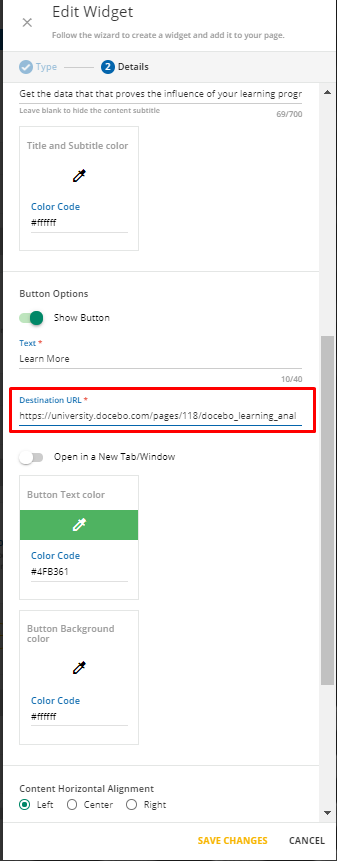
But what if I told you don’t have to (and probably shouldn’t) use the full URL?
Instead of using the full URL you can actually use what’s called a “relative URL” to populate the URL field inside of a custom content box.
So using our example above:
https://university.docebo.com/pages/118/docebo_learning_analytics
Becomes:
/pages/118/docebo_learning_analytics
Why It Matters!
This is important because it future proofs your platform from any future domain changes as well as allows you to use the same page across multiple domains if you’re an extended enterprise client. It works because it will fill in the root domain of whatever domain the user logged into the LMS with which ensures they won’t see any of those pesky 404 errors
Pre Enrollment vs Post Enrollment Course URLs
When we create e-learning courses within Docebo there are a host of different ways that users can be provided links to the courses. By default the a lot of our customers will provide a self enrollment/deep link that when clicked the user will be automatically enrolled into the course.
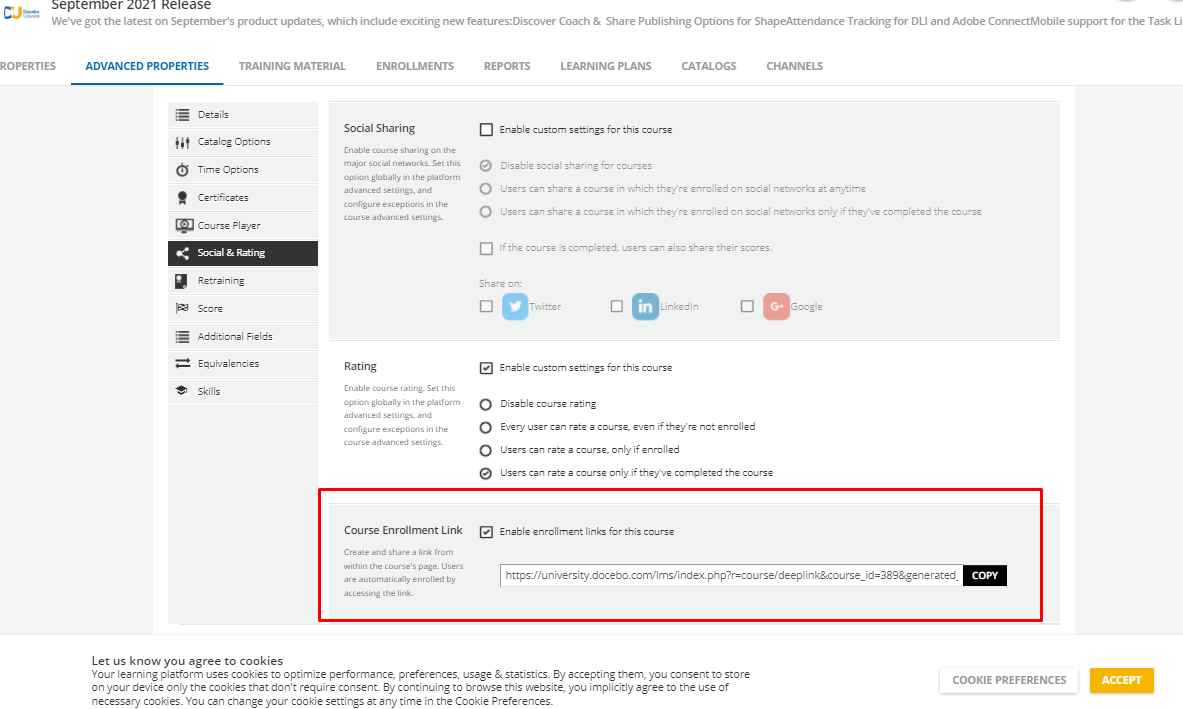
That’s a great strategy but that link won’t redirect to the course landing page if the user is already enrolled in the course which means it might pose some difficulties if you’re sending the link to mixed audience of enrolled and unenrolled users.
The best strategy is to use the pre-enrollment URL, the URL that’s exposed on a course landing page before a user has enrolled, because this URL will redirect whether the user is enrolled in the course or not.
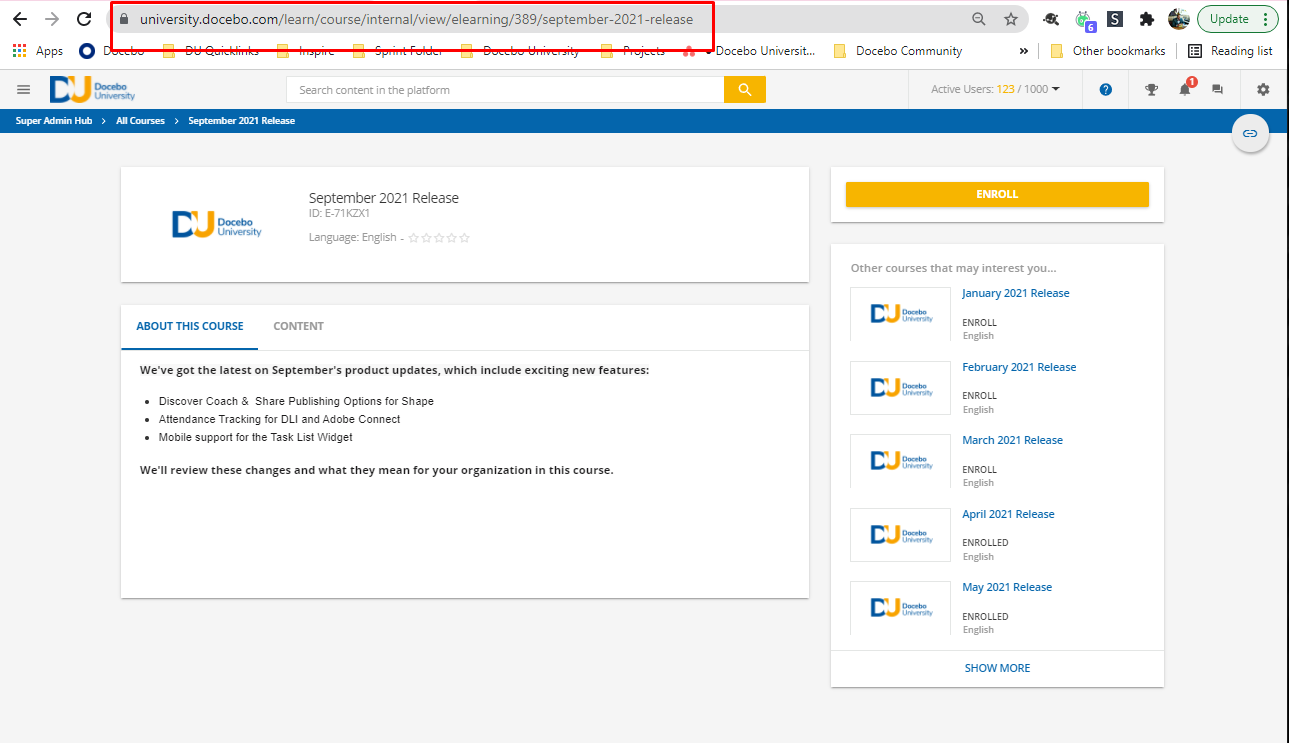
The difficulty is that as admins when we click “preview” course we’re enrolled into the course and will be presented with a URL that only users who are enrolled in the course will be able to use.
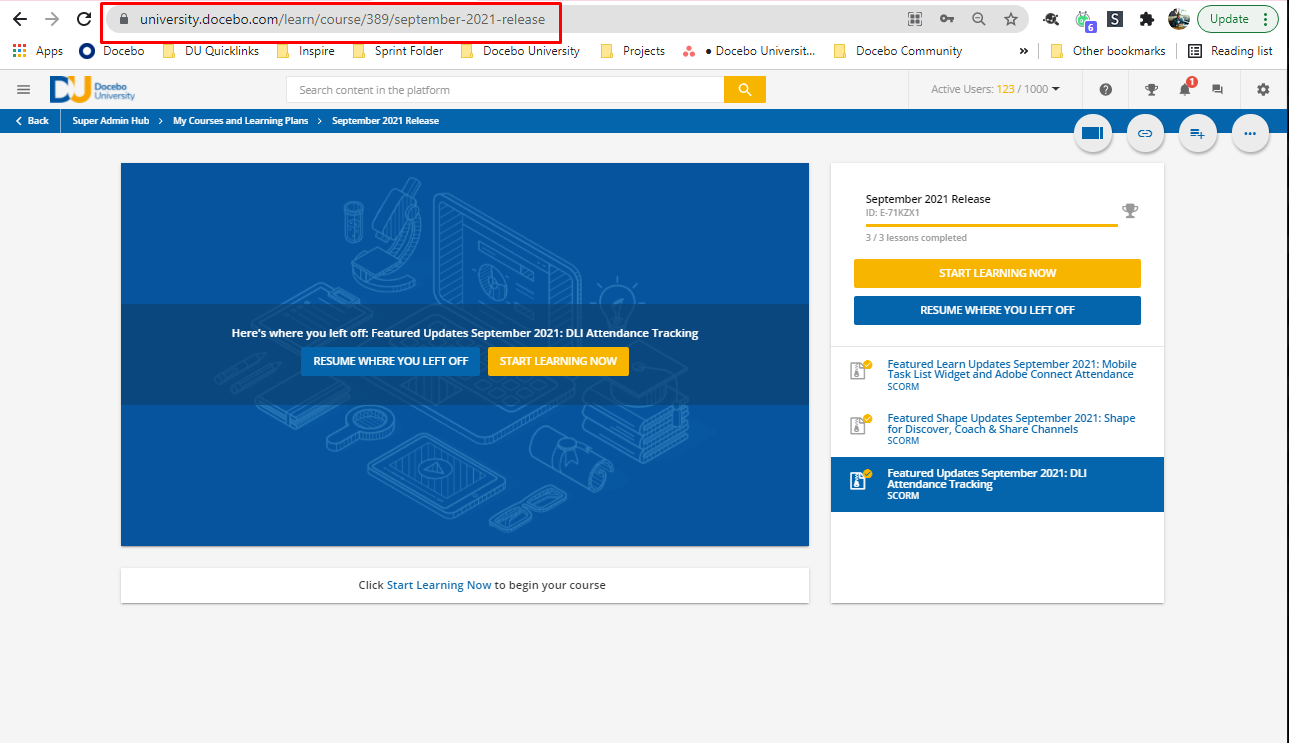
The good news is that these URLs are predictable and can be built using the following guide!
If we’re trying to build links for emails or want to provide a “pre-enrollment” view (which will require the user to enroll themselves by clicking “enroll now” then we want to use the following format. For transparency I've also included examples of how the URLs change after you’ve enrolled (“post-enrollment”)
Here’s the format for Pre-enrollment URLs
https://[www.yourcustomdomain.com]/learn/course/internal/view/elearning/[course_id]/[course-title-with-dashes-where-spaces-go]
Pre-enrollment course link format: /learn/course/internal/view/elearning/id/name
Post-enrollment course link format: /learn/course/id/name
For learning plans, the format is as follows:
Pre-enrollment LP link format: /learn/learning_plan/view/id/name
Post-enrollment LP link format: /learn/lp/id/name
Here’s a Google Sheet I’ve made for converting Course URLs. All you have to do is click “preview course” from the Admin view within the LMS then copy the URL and paste it in the box titled “Insert the URL you'd like to convert below:”
Here’s an excel spreadsheet that can be downloaded inside of DU.
 Tip #4 - Keeping Menus Tidy with Hidden Menus
Tip #4 - Keeping Menus Tidy with Hidden Menus
In order for a user to be able to access a custom page you’ve created it must be assigned to a menu that a user has visibility over. But what if you don’t want to clutter your user’s menus with too many navigations while given them the ability to access those menus through custom content boxes in custom widget pages.
Let’s start by creating a menu that the user will see when they login.
- Navigate to the ⚙️ Admin Menu > Manage Menus
- Select the + in the top right to Create a New Menu
- You can name the menu whatever you’d like but we’ll be naming this “Customer 2021” to reflect the group of users who will see the menu when they login.
- Set the visibility of the menu to include whatever users you’d like to see the pages within this menu (groups, branches, and/or levels). In our example we’ll be choosing the group “Customers” and checking the box “Users” so that only users in that group will see this menu.
- Add whatever “hidden pages” you’d like to share
- Select Save Changes
- On the Manage Menus page, move this “Customer 2021” Menu to the top of the list so that users in the customer group will be assigned this menu when they first log in
- Publish the menu
Now that we’ve created our visible menu for customers we’re going to build a second menu that contains all of the other pages that we want these users to have access to.
- Navigate to the ⚙️ Admin Menu > Manage Menus
- Select the + in the top right to Create a New Menu
- Name the menu something like Catch All or Hidden Pages
- Set the visibility of the menu to include whatever users you’d like to see the pages within this menu (groups, branches, and/or levels)
- Add whatever “hidden pages” you’d like to share
- Select Save Changes
- On the Manage Menus page, move this “Catch All” menu to the very bottom of the list
- Publish the menu
This will ensure that these pages are visible to the user when you link them to the page from elsewhere in the platform, but because the menu is at the bottom of the hierarchy, it will be superseded by other menus higher in the Manage Menus section.
Another cool aspect of this is that you can assign a page to a menu and until you tell someone what the URL is or add a button they won’t know it’s there. This can be helpful if you’d like to get the opinion of someone in that audience without exposing the link to the entire audience.
 Tip #5- Testing Notifications
Tip #5- Testing Notifications 
Let’s start by discussing a concept called “plus addressing”. This allows you to create multiple test user accounts with unique email addresses while having those notifications sent to the same email address.
Here’s an article from google explaining the concept:
| If you don’t want to create multiple accounts or aliases for specific tasks, just add a plus sign (+) and any word before the @ sign in your current address. Messages will still reach you, and you’ll have an infinite amount of emails for different purposes. |
| For example, if your email address is cassy@solarmora.com, use cassy+news@solarmora.com or cassy+urgent@solarmora.com. |
Using the above strategy we can now create a workflow for testing the formatting and execution of new notifications.
First Create the users you’d like to test using the “plus addressing” model used above.

Next Create a group called “Test Notification Group” (you can name it whatever you’d like!) and add the test users you’ve created.
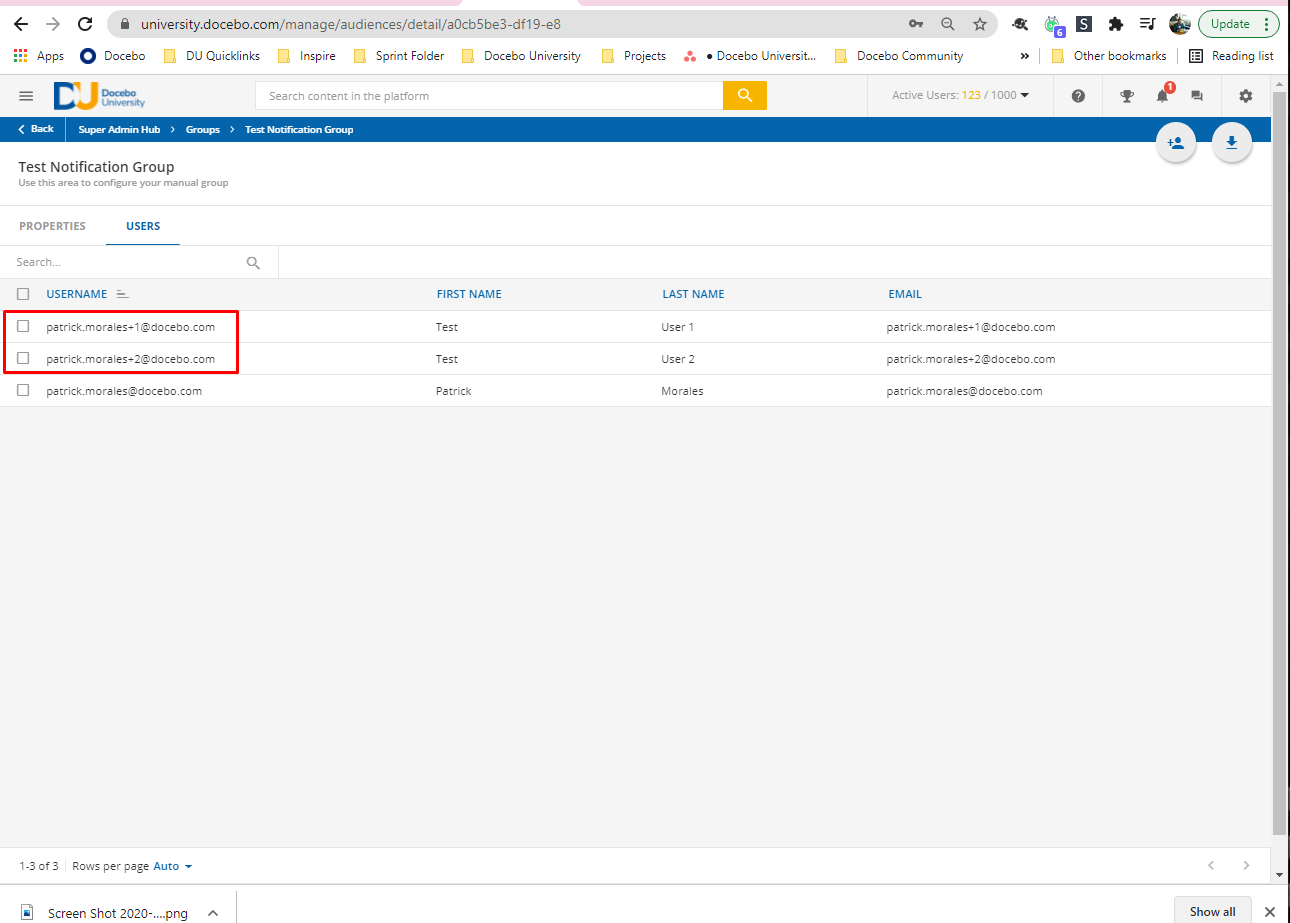
Now we have a group that can be targeted and we have users that can be enrolled into courses or will be the target of whatever notification we decide to test.
Additionally we’ll receive all these notifications in the root email (in this case patrick.morales@docebo.com)
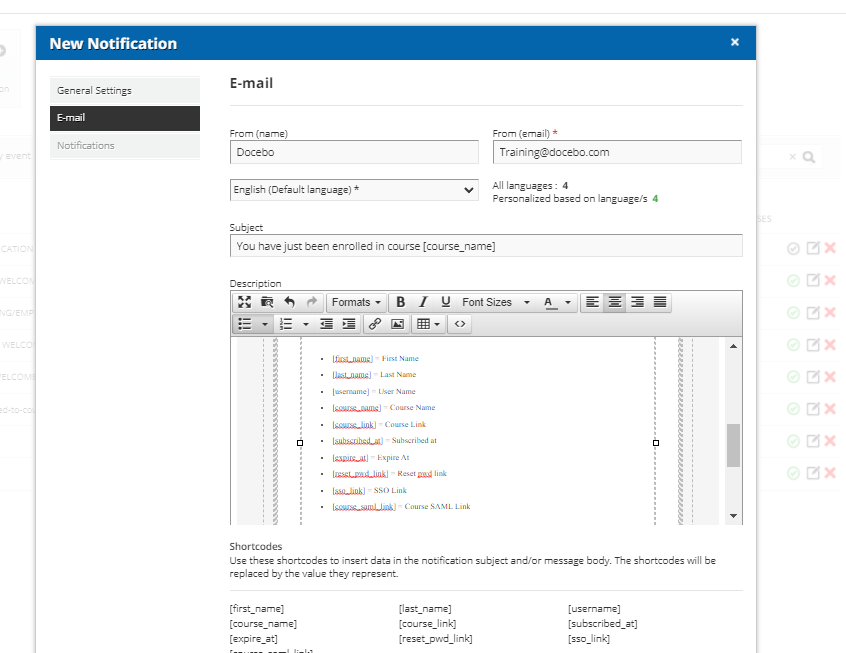
Now if we enroll these users into a course (or perform what ever action would trigger the notification we can receive the notification in our inbox.

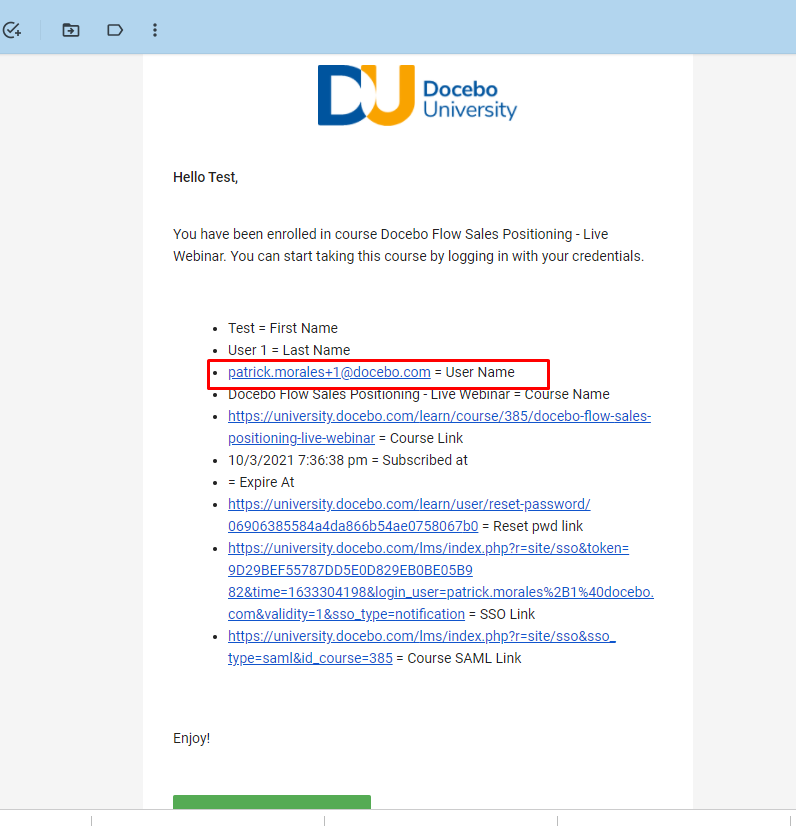
![]() Bonus Notification Tip!
Bonus Notification Tip! ![]()
Did you know you can embed url short codes into text?
